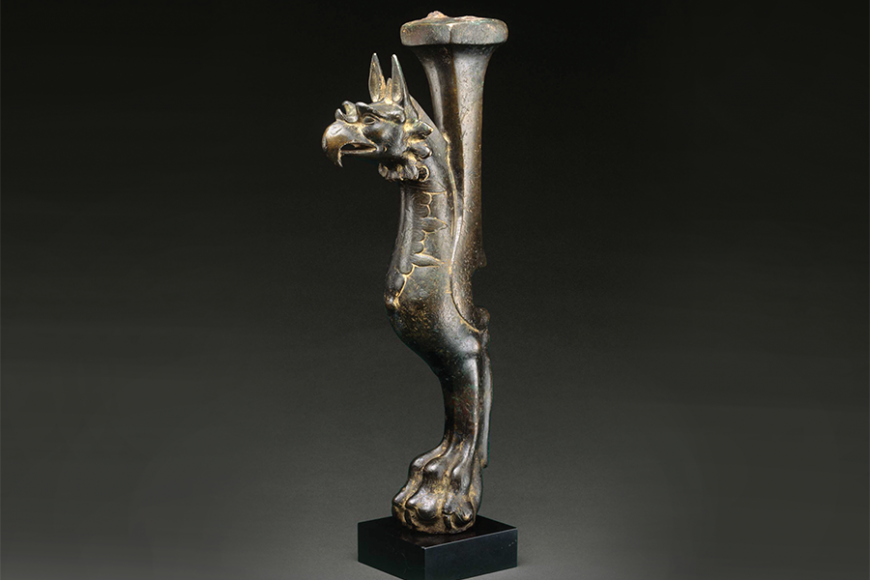If “no man is an island” — as 17th-century poet John Donne observed — then neither is any culture. Trade, diplomacy and war have been three ways in which civilizations interact, sharing motifs and artistic styles, among other things.
These intersections are the idea behind “Crossroads,” three provocative installations celebrating The Metropolitan Museum of Art’s 150th anniversary that consider the cross-cultural currents flowing around certain themes. “Piety and Power” plumbs spiritual and political power in 12 magisterial, devotional works from Asia, the Americas, Africa and Europe in the Medieval Sculpture Hall. “Empires and Emporia” explores the mercantile link among Asia, Europe and America in 24 sensuous objects in the Asian Art Galleries Astor Forecourt.
But for April WAG’s animal theme we’re focusing on the third “Crossroads” — “Mythical Beasts,” beginning in the Gallery for the Art of the Ancient Near East, Cyprus and the Islamic World and continuing in the Greek and Roman Galleries of Cypriot Art. Here viewers will recognize an example of the sphinx, originally a half-man, half-lion in Egypt — think the Great Sphinx of Giza — that has been familiar in the eastern Mediterranean since 2000 B.C. Leave it to the ancient Greeks to sex things up, turning the sphinx into an alluring monster with the head and bust of a woman, the wings of a bird and the body of a lion, as in The Met’s Cypriot limestone funerary stele of two sphinxes from last quarter of the fifth century B.C. All these years later, the Greek gift for sensual figurative sculpture is still evident in this work, as are the rich pink streaks in the limestone. (For added sphinx fun, take a short walk over to the 19th-century European painting and sculpture promenade that is Gallery 800 to view Gustave Moreau’s 1864 Symbolist painting “Oedipus and the Sphinx,” in which the tragic hero — meeting the merciless Sphinx at a crossroads, their eyes locked, her claws digging into him — answers her riddle correctly, defeating her but sealing his doom.)
The centrality of Cyprus to Greek and Near Eastern cultures is such that The Met has underscored five additional objects in the adjacent Cypriot galleries, including a sarcophagus and two male figures that display Egyptian, Assyrian and Greek influences.
Like the sphinx, the dragon is another fantastic beast transformed from culture to culture — a creature of beneficent power in China but a stalking gatekeeper in Babylonia, derived from an earlier Sumerian serpent god and later a fearsome force in Islam. It’s represented in “Mythical Beasts” by a glazed and molded brick relief of a proud mushhushshu dragon (604—562 B.C.) from the Ishtar Gate in Babylon, 53 miles south of Baghdad in modern-day Iran. Meanwhile, entwined, serpentine dragons figure in a 1640 blue-and-white dish from Iran that marries Near Eastern aesthetics to Chinese export ware.
Early Islamic Iran also adapted the ancient Middle Eastern griffin — part lion, part eagle — in its decorative arts as a symbol of authority, much as medieval European heraldry would later do. Fittingly and majestically, the griffin on display at The Met rises from a throne leg (late seventh—early eighth century), a bronze work cast around a ceramic core, probably from western Iran.
It’s a kind of treasure hunt, one that illustrates how distinct but neighboring peoples meet at the intersection of the imagination.
For more, visit metmuseum.org.





